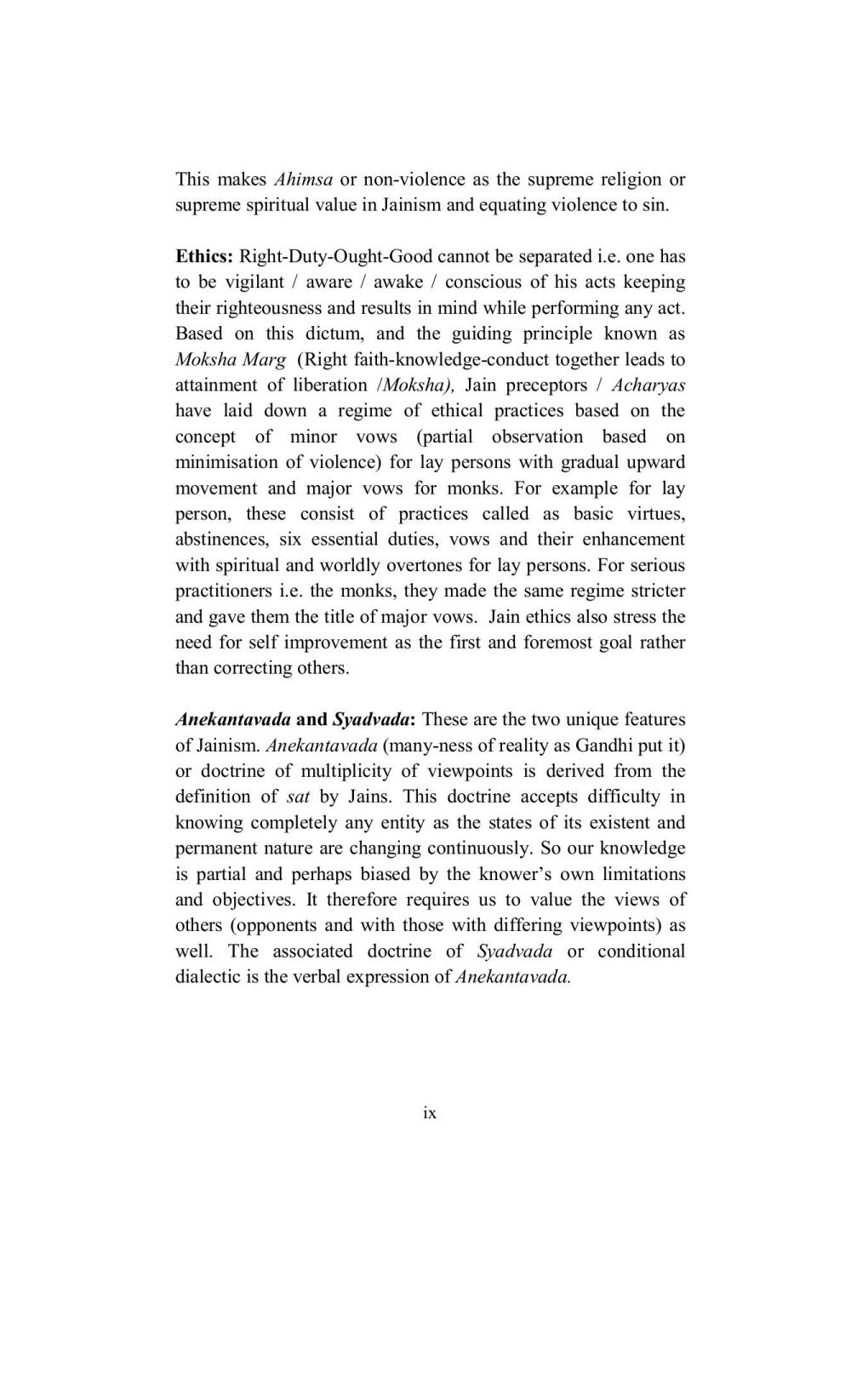________________
This makes Ahimsa or non-violence as the supreme religion or supreme spiritual value in Jainism and equating violence to sin.
Ethics: Right-Duty-Ought-Good cannot be separated i.e. one has to be vigilant aware awake / conscious of his acts keeping their righteousness and results in mind while performing any act. Based on this dictum, and the guiding principle known as Moksha Marg (Right faith-knowledge-conduct together leads to attainment of liberation /Moksha), Jain preceptors / Acharyas have laid down a regime of ethical practices based on the concept of minor vows (partial observation based on minimisation of violence) for lay persons with gradual upward movement and major vows for monks. For example for lay person, these consist of practices called as basic virtues, abstinences, six essential duties, vows and their enhancement with spiritual and worldly overtones for lay persons. For serious practitioners i.e. the monks, they made the same regime stricter and gave them the title of major vows. Jain ethics also stress the need for self improvement as the first and foremost goal rather than correcting others.
Anekantavada and Syadvada: These are the two unique features of Jainism. Anekantavada (many-ness of reality as Gandhi put it) or doctrine of multiplicity of viewpoints is derived from the definition of sat by Jains. This doctrine accepts difficulty in knowing completely any entity as the states of its existent and permanent nature are changing continuously. So our knowledge is partial and perhaps biased by the knower's own limitations and objectives. It therefore requires us to value the views of others (opponents and with those with differing viewpoints) as well. The associated doctrine of Syadvada or conditional dialectic is the verbal expression of Anekantavada.
ix




